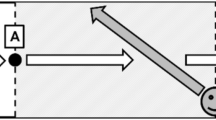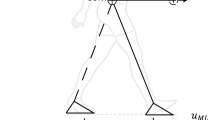Abstract
Introduction
The aim of the study was to collect real-world sensor data on acceleration and deceleration while riding a bus or tram. With respect to the risk of suffering fall-related injuries while using public transportation, our interest was to understand the amplitude of real-world perturbations to translate them to innovative reactive balance training programs.
Methods
Acceleration and deceleration data were collected during 12 days in buses and trams in a German city. A sensor, which was fixed to a vertical bar in the vehicle, measured the acceleration signals. Additionally, extreme values of deceleration during full braking were collected in a driving school bus.
Results
For the incident type acceleration from standing extreme values of acceleration and jerking were higher in buses compared to trams with a maximum acceleration of 3.37 m/s2 and 1.80 m/s2, respectively, and extreme jerking of 13.30 m/s3 and −5.56 m/s3, respectively. Similarly, for the incident type deceleration approaching a stop extreme values of deceleration and jerking were higher in buses compared to trams with maximum deceleration of −3.12 m/s2 and −2.31 m/s2, respectively, and extreme jerking of −19.19 m/s3 and −10.83 m/s3, respectively. Extreme values for maximum deceleration and extreme jerking as simulated at the driving school were not reached during real-world measurements. The duration of incidents in acceleration from standing and deceleration approaching a stop was shorter for buses than for trams.
Conclusion
Acceleration and jerking values were higher in buses compared to trams. Based on this study, laboratory simulation paradigms can be developed to study balance responses in older persons and to design fall prevention interventions which are ecologically valid.
Zusammenfassung
Hintergrund
Ziel dieser Studie war es, reale Beschleunigungswerte von Bussen und Straßenbahnen im öffentlichen Nahverkehr zu erheben. Hinsichtlich der Sturzgefahr im öffentlichen Nahverkehr sollte die Intensität realer Perturbationen erfasst werden, um sie auf innovative reaktive Balancetrainingsprogramme zu übertragen.
Methoden
An 12 Tagen wurden die Beschleunigungsdaten von Bussen und Straßenbahnen in einer Stadt in Deutschland erhoben. Die Daten wurden über einen an einer vertikalen Haltestange fixierten Sensor gemessen. Zusätzlich wurden in einer Bus-Fahrschule Extremwerte während Vollbremsungen gemessen.
Ergebnisse
Beim Anfahren aus dem Stand waren die Extremwerte für Beschleunigung und Ruck in Bussen höher als in Straßenbahnen (Beschleunigung: 3,37 m/s2 vs. 1,80 m/s2, Ruck: 13,30 m/s3 vs. −5,56 m/s3). Ähnlich waren auch beim Abbremsen zum Stand die Extremwerte für Beschleunigung und Ruck in Bussen höher als in Straßenbahnen (Beschleunigung: −3,12 m/s2 vs. −2,31 m/s2, Ruck: −19,19 m/s3 vs. −10,83 m/s3). Die in der Fahrschule bei Vollbremsungen erreichten Extremwerte für Beschleunigung und Ruck wurden im Alltag nicht erreicht. Die Dauer des Anfahrens aus dem Stand und des Abbremsens zum Stand war in Bussen kürzer als in Straßenbahnen.
Schlussfolgerung
Beschleunigungs- und Ruckwerte waren in Bussen höher als in Straßenbahnen. Auf der Grundlage dieser Studie können nun ökologisch valide Simulationen entwickelt werden, mit denen ältere Menschen zur Sturzprävention im Labor ihr reaktives Gleichgewicht trainieren können.

Similar content being viewed by others
References
Gerards MHG, McCrum C, Mansfield A, Meijer K (2017) Perturbation-based balance training for falls reduction among older adults: current evidence and implications for clinical practice. Geriatr Gerontol Int 17(12):2294–2303
Lurie JD, Zagaria AB, Pidgeon DM, Forman JL, Spratt KF (2013) Pilot comparative effectiveness study of surface perturbation treadmill training to prevent falls in older adults. BMC Geriatr 13:49
Pai Y‑C, Bhatt T, Yang F, Wang E (2014) Perturbation training can reduce community-dwelling older adults’ annual fall risk: a randomized controlled trial. J Gerontol A Biol Sci Med Sci 69(12):1586–1594
Shimada H, Obuchi S, Furuna T, Suzuki T (2004) New intervention program for preventing falls among frail elderly people: the effects of perturbed walking exercise using a bilateral separated treadmill. Am J Phys Med Rehabil 83(7):493–499
Yang F, Bhatt T, Pai Y‑C (2013) Generalization of treadmill-slip training to prevent a fall following a sudden (novel) slip in over-ground walking. J Biomech 46(1):63–69
Mansfield A, Peters AL, Liu BA, Maki BE (2010) Effect of a perturbation-based balance training program on compensatory stepping and grasping reactions in older adults: a randomized controlled trial. Phys Ther 90(4):476–491
Pai YC, Maki BE, Iqbal K, McIlroy WE, Perry SD (2000) Thresholds for step initiation induced by support-surface translation: a dynamic center-of-mass model provides much better prediction than a static model. J Biomech 33(3):387–392
Parijat P, Lockhart TE (2012) Effects of moveable platform training in preventing slip-induced falls in older adults. Ann Biomed Eng 40(5):1111–1121
Shumway-Cook A, Woollacott MH (2007) Motor control. Lippincott Williams & Wilkins, Philadelphia, pp 21–45
Statistisches Bundesamt (2019) Unfälle von Bussen im Straßenverkehr. https://www.destatis.de/DE/Themen/Gesellschaft-Umwelt/Verkehrsunfaelle/Publikationen/Downloads-Verkehrsunfaelle/unfaelle-kraftomnibusse-5462411187004.pdf?__blob=publicationFile. Accessed 7 Jan 2020
Björnstig U, Albertsson P, Björnstig J, Bylund PO (2005) Injury events among bus and coach occupants—non-crash injuries as important as crash injuries. IATSS Res 29:79–87
Halpern P, Siebzehner MI, Aladgem D, Sorkine P, Bechar R (2005) Non-collision injuries in public buses: a national survey of a neglected problem. Emerg Med J 22(2):108–110
Kendrick D, Drummond A, Logan P, Barnes J, Worthington E (2015) Systematic review of the epidemiology of non-collision injuries occurring to older people during use of public buses in high income countries. J Transp Health 2:394–405
Albertsson P, Falkmer T (2005) Is there a pattern in European bus and coach incidents? A literature analysis with special focus on injury causation and injury mechanisms. Accid Anal Prev 37(2):225–233
Kirk A, Grant R, Bird R (2003) Passenger casualties in non-collision incidents on buses and coaches in Great Britain. 18th International Technical Conference on the Enhanced Safety of Vehicles, Nagoya
Kirchner M, Schubert P, Haas CT (2014) Characterisation of real-world bus acceleration and deceleration signals. JSIP 5:8–13
Palacio A, Tamburro G, O’Neill D, Simms CK (2009) Non-collision injuries in urban buses—strategies for prevention. Accid Anal Prev 41(1):1–9
Author information
Authors and Affiliations
Corresponding author
Ethics declarations
Conflict of interest
U. Lindemann, K. Sczuka, C. Becker and J. Klenk declare that they have no competing interests.
Ethical standards
Ethical approval was not required, because no data on human subjects or animals were collected. All data are available on personal request from the corresponding author.
Additional information
Practical application
Based on this study laboratory simulation paradigms can be improved in order to design fall prevention interventions for older persons under real-world conditions.
Rights and permissions
About this article
Cite this article
Lindemann, U., Sczuka, K., Becker, C. et al. Perturbation in public transport as a basic concept for perturbation-based balance training for fall prevention. Z Gerontol Geriat 54, 571–575 (2021). https://doi.org/10.1007/s00391-020-01755-w
Received:
Accepted:
Published:
Issue Date:
DOI: https://doi.org/10.1007/s00391-020-01755-w




